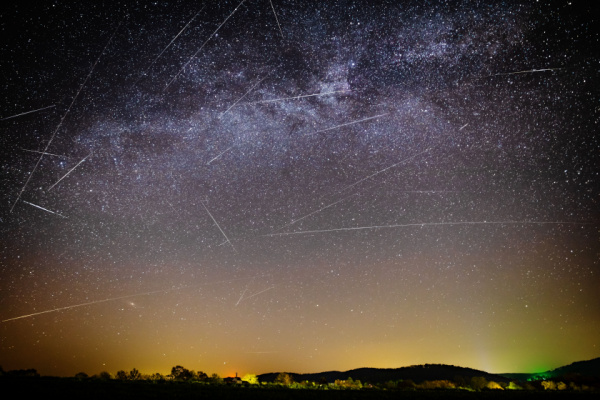The Lyrid Meteor Shower is usually active between April 16 and 25 every year, and for 2023, the best time to see the Lyrids are towards the end of its cycle, so get ready to stargaze!
Named after constellation Lyra, the Lyrids are one of the oldest recorded meteor showers—according to some historical Chinese texts, the shower was seen over 2,500 years ago. The fireballs in the meteor shower are created by debris from comet Thatcher, which takes about 415 years to orbit around the Sun. The comet is expected to be visible from Earth again in 2276.
You don’t need any special equipment or a lot of skills to view a meteor shower. Even though all you really need is a clear sky, lots of patience, and an Interactive Meteor Shower Sky Map (there are several sites online that have them available) with a visibility conditions meter to see a meteor shower, the following tips can help maximize your shooting star viewing experience.
- Find a secluded viewing spot, away from the city lights. Once at the venue, your eyes may take 15 to 20 minutes to get used to the dark.
- Dress for the weather, and make sure you are comfortable, especially if you plan to stay out long. Bring a blanket or a comfortable chair with you—meteor watching can be a waiting game.
- Once you have found your viewing spot, lie down on the ground and look at the sky. You can use an Interactive Meteor Shower Sky Map to find the direction of the radiant; the higher the radiant is above the horizon, the more meteors you are likely to see.
- Meteor showers appear to originate from the radiant, but meteors can appear in any part of the sky.
—
Photo Credit: Ingo Bartussek / Shutterstock.com
